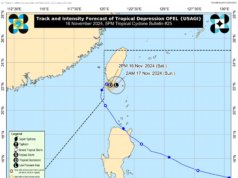Contact in Brazil’s cities between humans and dangerous yellow scorpions is on the rise. Scientists say the arachnids, which hunt cockroaches but can deliver a nasty sting, are being driven out of their natural habitats and following the food – right into urban areas.
Despite the paucity of nature in the urban jungle, some animals still manage to proliferate: raccoons, coyotes, foxes and falcons have all found concrete substitutes for their forests in human cities. Now, Brazil can the make the scorpion the latest addition to this list.
Stings by Brazil’s four types of dangerous scorpions have skyrocketed in the last 20 years, from 12,000 cases in the year 2000 to 140,000 in 2018, according to the country’s health ministry. In 2017, the last year for which data is available, 88 people died from those stings, most of them children.
Many of those stings are happening not in rural areas closer to the equator, but in urban areas, and farther and farther south, the Conversation reported.
“With deforestation and the increase in urban centers, this scorpion is increasing its presence,” Rogerio Bertani, a scientific researcher and scorpion specialist at the Butantan Institute in a Sao Paulo, told the UK Guardian last July. “Contact with human beings is very big.
Home
United States
USA — Science Climate Change, Deforestation Funnel Deadly Scorpions into Brazil’s Cities






